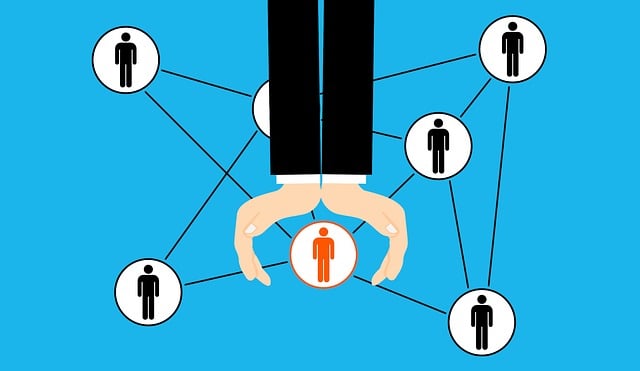Comprehensive Liability Insurance is a powerful tool for businesses, offering extensive protection against diverse risks, including property damage, injuries, and legal liabilities. Essential for small businesses, it provides stability, peace of mind, and financial security in unpredictable markets. This insurance covers various scenarios, from general liability to professional negligence and product-related incidents. Shopping for policies requires comparing quotes, scrutinizing language, and considering insurer reputation and claims processing. Understanding exclusions is vital to avoid unexpected gaps in coverage. Real-world examples highlight its value in mitigating costs and disruptions caused by accidents or property damage. Effective risk mitigation through training, internal controls, and safety protocols further reduces potential claims, making Comprehensive Liability Insurance a critical component for business stability.
Understanding Comprehensive Business Insurance: What It Covers

Comprehensive business insurance is a vital protection measure for any company, offering far more than basic coverage. At its core, it’s about safeguarding your business from various risks and potential liabilities. This type of insurance goes beyond general liability by providing a broader spectrum of coverage, ensuring peace of mind in an unpredictable market.
When we talk about comprehensive liability insurance, we’re referring to a policy that typically includes protection against property damage, legal responsibilities for injuries or harm caused to others, as well as business interruption. It’s designed to shield your company from financial losses resulting from accidents, natural disasters, employee disputes, and other unforeseen events. This is especially crucial for small businesses, ensuring their longevity and stability in the face of unexpected challenges.
Types of Liability: General, Professional, and Product

Liability insurance is a critical component of any business’s risk management strategy, offering protection against potential claims and lawsuits. When considering comprehensive liability insurance, understanding the different types of liability coverage is essential. These primarily include general, professional, and product liability.
General liability covers a wide range of claims, including personal injury and property damage that may occur on your business premises or due to products or services you offer. Professional liability, also known as errors and omissions insurance, protects against claims arising from professional negligence, such as misadvice, mistakes in service, or incomplete work. Product liability, on the other hand, specifically targets businesses that manufacture, distribute, or sell products, shielding them from claims related to product defects, injuries, or deaths caused by their offerings.
The Importance of Comprehensive Coverage for Small Businesses

Small businesses are the backbone of many economies, providing goods and services that sustain communities. However, they face unique challenges, including financial vulnerabilities. Comprehensive Liability Insurance stands as a shield, offering protection against potential risks and lawsuits. This type of insurance is not just an add-on; it’s a vital strategic move for any small business owner.
Comprehensive Liability Insurance goes beyond basic coverage by addressing various liability claims. It covers damages to property, injuries to customers or employees, and legal fees associated with disputes. For small businesses, this means safeguarding against unexpected events that could cripple their operations and financial stability. By investing in comprehensive liability insurance, business owners can focus on growth and innovation, knowing they have a reliable safety net in place.
Key Components of Affordable Business Insurance Packages

When exploring affordable comprehensive business insurance, understanding the key components is essential. A robust package typically includes Comprehensive Liability Insurance, which shields your business from financial loss resulting from claims related to bodily injury or property damage to customers, clients, or third parties. This coverage extends beyond traditional liability insurance by addressing a broader range of incidents, including personal and advertising injury, products liability, and more.
Additionally, these packages often incorporate other vital protections such as property insurance to safeguard your business assets against damage or theft, business interruption insurance to mitigate losses during unforeseen events like natural disasters or system failures, and professional liability insurance to shield your business from claims of negligence related to your services or advice.
How to Compare Quotes and Policies for the Best Rates

When shopping for Affordable Comprehensive Business Insurance, comparing quotes and policies is paramount to securing the best rates. Start by gathering multiple quotes from reputable insurance providers. Ensure each quote includes details like coverage limits, deductibles, and specific exclusions for Comprehensive Liability Insurance. Next, analyze policy language carefully, looking for variations in what’s covered and any potential loopholes. Don’t be afraid to ask questions or seek clarification on ambiguous terms.
Consider factors beyond price alone. Evaluate the financial stability of insurers, their customer service reputation, and claims processing efficiency. Reading reviews from other business owners can offer valuable insights. Additionally, assess whether the policy offers additional benefits like legal fees coverage or business interruption protection. By taking a holistic approach to comparison, you’ll be better equipped to choose a policy that provides adequate Comprehensive Liability Insurance at an affordable rate.
Common Exclusions and Limitations: What You Need to Know

When considering Affordable Comprehensive Business Insurance, understanding common exclusions and limitations is vital. Many business insurance policies have specific exclusions that detail what isn’t covered. For instance, comprehensive liability insurance typically excludes events like war, terrorism, or natural disasters, which require separate coverage. Additionally, some policies may not cover certain types of damage, such as environmental cleanup or business interruption caused by issues other than physical damage to property.
It’s essential to read the policy documents carefully to comprehend what’s excluded. This awareness ensures you’re not left with unexpected costs in the event of a claim. By identifying these exclusions, businesses can make informed decisions about additional coverage options and risk management strategies to protect their operations and financial health.
Case Studies: Real-World Examples of Comprehensive Liability Claims

Comprehensive Liability Insurance covers businesses against a wide range of potential risks, from property damage to personal injuries and legal liabilities. Let’s look at some real-world examples to understand its significance. For instance, a small café might face a claim if a customer slips on a wet floor and sustains an injury. This could result in significant medical bills, legal fees, and compensation for the victim. Comprehensive Liability Insurance would step in to cover these expenses, protecting the business from financial strain.
Another scenario involves a construction company that accidentally damages a neighbor’s property during renovation work. Such incidents can lead to costly repairs, lawsuits, and potential loss of reputation. However, with Comprehensive Liability coverage, the insurance provider will handle negotiations, legal defense, and settlement or judgment expenses, ensuring the business remains protected and can continue operations without undue financial burden.
Strategies for Risk Mitigation and Claim Prevention

Implementing effective risk mitigation strategies is a key aspect of managing and reducing potential claims against your business. Comprehensive Liability Insurance plays a pivotal role in shielding your organisation from financial exposure resulting from unforeseen events. One powerful approach to claim prevention is regular staff training on safety protocols, ensuring everyone understands their responsibilities and the potential consequences of negligence.
Additionally, establishing robust internal control measures can significantly decrease risks. This includes implementing secure data management practices to prevent data breaches, regular equipment maintenance to reduce malfunctions, and clear policy guidelines for employee conduct. By fostering a culture of awareness and accountability, businesses can actively minimise the likelihood of incidents that may lead to costly claims.
